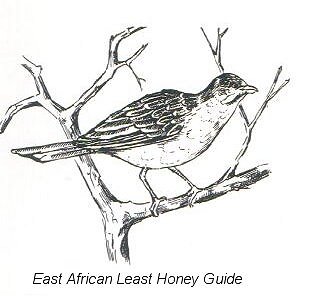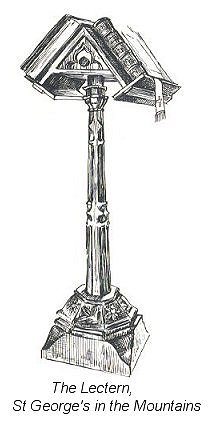
At the School as time marched on conditions changed. With increased
numbers an extra teacher was appointed. Gradually the grounds were developed: a
tennis court was chiselled out of the hillside; the original playing field was
extended and another made; and a fine swimming-bath, one of the School�s biggest
achievements, brought the satisfaction of having every child able to swim and
the enjoyment of galas.
New amenities were put into use: classrooms, dormitory, ablution blocks,
sickbay and staff quarters were added and most of the old buildings were
modernised. With the opening of the new road there was much coming and going of
visitors, official and otherwise, and a steady stream of young teachers provided
first class wives for the bachelors of the district.
Conservation Days were marked by the planting of shrubs and trees to
beautify the school grounds and the village. The first was the Nyasaland
Mahogany which now provides shade for spectators at the tennis court; other
early plantings, and perhaps the most loved, were the Patula pines between the
compound and the tennis court which have provided a refuge for young cowboys and
crooks and for small girls to set up house.
The older pupils became members of a Young Farmers� Club and travelled
round the district visiting farms and estates to be shown the development of
natural resources. The kindness and interest shown by their hosts was
outstanding, and the far from tuneful strains of �Show me the way to go home�
invariably heralded the return to base of truckloads of tired, dirty, but
extremely happy Young Farmers.
At the Memorial Hall a second plaque next to the one commemorating the
First World War was unveiled in April 1952. During the address a flight of
Spitfires flew past in salute. Buglers of Umtali High School Cadet Corps sounded
the Last Post and the Reveille. Prayers were offered and wreaths were
laid, and after the singing of the National Anthem, tea was
served.
1939� 1945
IN HONOURED MEMORY OF
F. E. EDWARDS J. P. KRUGER C. J. NEZAR G. P. REID
W. J. ROSE T. F. ROBERTS L. J. VAN DER LINDE
N. P. VAN DER MERWE J. P. WATSON G. B. ZIERVOGEL
MEN OF MELSETTER AND CHIPINGA DISTRICTS
WHO NOBLY RESPONDED TO THE CALL TO ARMS
AND WHO FELL IN THE SECOND WORLD WAR.
GREATER LOVE HATH NO MAN THAN THIS.

In 1953 a public meeting authorised the transfer of �682.13. 11 from
the Melsetter Memorial Hospital Fund to the War Memorial Hall. The Constitution
for the Memorial Hall was ratified, and a Board of Trustees was composed of the
Chairmen of the V.M.B., the F.A. and the W.I.; later the Chairman of the
Library Committee was included. Mrs. Allott, who as V.M.B. Secretary had
previously handled the Memorial Hall affairs, was appointed Honorary Secretary
to the Board, a post which she held most efficiently until the end of 1969. The
system worked reasonably well as Trustees were able to report back to their own
representative organisations, but there were difficulties and a lack of
continuity as the Chairmen were elected annually by their Associations.
Some of the capital was spent on major renovations � the stone wall was
built; the mud floor of the verandah was cemented and painting and pointing was
done; the wall between the library and kitchen was removed, which doubled the
size of the Library; library shelves were bought; a new kitchen was built on the
corner of the back verandah; mains water was laid on; a lavatory was built on;
and the foundations were repaired.
By 1954 rates and insurance amounted to �20 a year, and had risen to
�30 by 1960. The Trustees tried hard to avoid frittering away the remaining
capital in annual payments, but had little source of revenue. The most regular
was from the Farmers� Association, which in 1954 agreed to pay �12 a year for
their monthly meetings, but reduced it to �6 in 1964. The Library aimed to pay
�24 a year rental, but this was reduced to �3 in 1964. Small fluctuating amounts
were received from hiring the hall to committees and societies and for social
and political occasions, and from occasional hire of the piano. Religious bodies
were sometimes allowed the hall free, and were sometimes charged 5/ - or 10/-,
but this brought in very little from the few services held.

Mr. and Mrs.
Townsend-Green bought the hotel and started in with
plans for a luxury hotel. The first sod was turned in 1951 and the foundation
stone brought from the Chimanimani Pass, was laid by T.I.F. (later Sir Ian)
Wilson, M.P. On 21st March 1953 the Chimanimani Arms was opened with a
lunch party and a dinner and
dance.
The opening ceremonies did not go off as smoothly as had been hoped largely
because the new main road was still being constructed and the last few miles
into Melsetter were appallingly sticky and muddy after overnight rain. Country
Club members came in for a meeting that morning and most farmers owned Land
Rovers, so local residents arrived at the hotel before the roads were
churned up. Parties from Umtali, however, ran into trouble, including B. D.
Goldberg, then Chairman of the Board of Directors: near Melsetter the red earth
road became a quagmire, a car in front stuck, his party got out to help and were
soon covered in mud from head to foot, and then their car also stuck. Eventually
they arrived for the opening (after everyone had finished lunch) sitting on a
bulldozer and covered in mud. The party in the evening, however, was a great
success and the Hotel got off to a good start.
The fact that the road was not properly passable when the hotel was
completed was a severe setback. Few visitors reached the hotel, and after six
months it closed down and remained closed for 18 months. Having no hotel at all
was a handicap to the whole district. The Townsend-Greens relinquished their
interest, and when the hotel re-opened it was called the Chimanimani Chalet,
later changed to the Chimanimani Hotel.
Captain and Mrs. Allott were responsible for holding Anglicans
together, and after services in the Memorial Hall there was talk of building a
church, but most considered this a castle in the air with little chance of
accomplishment. John Olivey returned from his War service full of enthusiasm for
building a church, and he was foremost in getting the building and finishing
done as the dream became a fact.
In 1953 it was decided to start collecting funds to build on the stand
given by the Government, and many members of different denominations
contributed. The plans were designed and drawn by Ted Allott and Jumbo Williams
after the old church at Mylore in Cornwall with which it is affiliated and were
finalised by architects, and work started in August.
In April 1954 the
Foundation Stone of St. George in the Mountains was
laid by Bishop Paget, who, as Archbishop, consecrated the Church in October 1956
when the actual building was completed, although much still needed to be done
inside.

Gradually the finishing and furnishing was done with voluntary help and
gifts from many people. The stained glass window, given by Hallam and Beryl
Elton, was found in the Eltons� home in Somerset, where it had lain for half a
century. Its origin has not been proved, but it is possible that it came
originally from St. Albans, Wood Street, London, which was known as the French
Church; two details in the window suggest a French origin: the nun�s coif worn
by the Blessed Virgin and the fleur-de-lys design on the linings of St. John�s
cloak in the Ascension scene.
Services were conducted by priests from Umtali and by John Olivey as
Lay Reader until the Rev. Gordon Kirk was in charge of Chipinga and Melsetter
parishes. He was followed by the Rev. Louis Beck, who had been N.C. in Melsetter
previously, until ill-health forced him to give up the charge shortly before he
died in 1970. Visiting priests now take some services, and some are taken by
Robin Plunket as Lay Reader.
 At the School as time marched on conditions changed. With increased
numbers an extra teacher was appointed. Gradually the grounds were developed: a
tennis court was chiselled out of the hillside; the original playing field was
extended and another made; and a fine swimming-bath, one of the School�s biggest
achievements, brought the satisfaction of having every child able to swim and
the enjoyment of galas.
At the School as time marched on conditions changed. With increased
numbers an extra teacher was appointed. Gradually the grounds were developed: a
tennis court was chiselled out of the hillside; the original playing field was
extended and another made; and a fine swimming-bath, one of the School�s biggest
achievements, brought the satisfaction of having every child able to swim and
the enjoyment of galas.  In 1953 a public meeting authorised the transfer of �682.13. 11 from
the Melsetter Memorial Hospital Fund to the War Memorial Hall. The Constitution
for the Memorial Hall was ratified, and a Board of Trustees was composed of the
Chairmen of the V.M.B., the F.A. and the W.I.; later the Chairman of the
Library Committee was included. Mrs. Allott, who as V.M.B. Secretary had
previously handled the Memorial Hall affairs, was appointed Honorary Secretary
to the Board, a post which she held most efficiently until the end of 1969. The
system worked reasonably well as Trustees were able to report back to their own
representative organisations, but there were difficulties and a lack of
continuity as the Chairmen were elected annually by their Associations.
In 1953 a public meeting authorised the transfer of �682.13. 11 from
the Melsetter Memorial Hospital Fund to the War Memorial Hall. The Constitution
for the Memorial Hall was ratified, and a Board of Trustees was composed of the
Chairmen of the V.M.B., the F.A. and the W.I.; later the Chairman of the
Library Committee was included. Mrs. Allott, who as V.M.B. Secretary had
previously handled the Memorial Hall affairs, was appointed Honorary Secretary
to the Board, a post which she held most efficiently until the end of 1969. The
system worked reasonably well as Trustees were able to report back to their own
representative organisations, but there were difficulties and a lack of
continuity as the Chairmen were elected annually by their Associations. Mr. and Mrs.
Mr. and Mrs.  Gradually the finishing and furnishing was done with voluntary help and
gifts from many people. The stained glass window, given by Hallam and Beryl
Elton, was found in the Eltons� home in Somerset, where it had lain for half a
century. Its origin has not been proved, but it is possible that it came
originally from St. Albans, Wood Street, London, which was known as the French
Church; two details in the window suggest a French origin: the nun�s coif worn
by the Blessed Virgin and the fleur-de-lys design on the linings of St. John�s
cloak in the Ascension scene.
Gradually the finishing and furnishing was done with voluntary help and
gifts from many people. The stained glass window, given by Hallam and Beryl
Elton, was found in the Eltons� home in Somerset, where it had lain for half a
century. Its origin has not been proved, but it is possible that it came
originally from St. Albans, Wood Street, London, which was known as the French
Church; two details in the window suggest a French origin: the nun�s coif worn
by the Blessed Virgin and the fleur-de-lys design on the linings of St. John�s
cloak in the Ascension scene.